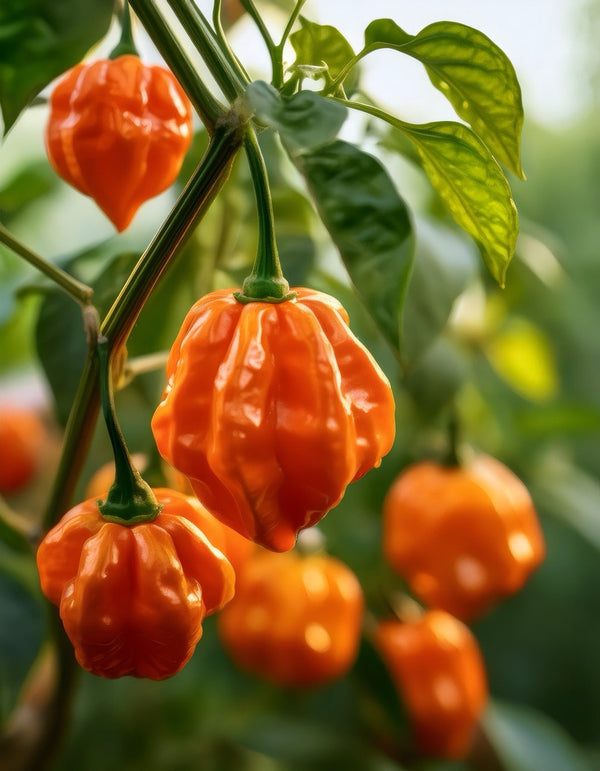Turn Up the Heat: The Global Roots and Fiery Flavor of Habanero Powder
Mar 26, 2025
There’s heat, and then there’s habanero heat—a kind of fire that doesn’t just sting but also sings. Habanero powder is not for the faint of tongue, but for those who understand that intensity, when guided, can enhance flavor instead of overwhelming it. This bright orange powder, made from one of the world’s hottest peppers, is used sparingly but reverently. Its citrus-like brightness, smoky finish, and unapologetic punch have made it a favorite among adventurous cooks from Mexico to Mississippi.
Where the Fire Begins: Habanero Cultivation Around the World
The habanero pepper (Capsicum chinense) is most famously associated with the Yucatán Peninsula in Mexico, where it has been grown for centuries and holds a special place in both cuisine and culture. This region’s combination of humid tropical climate, sandy-loam soil, and consistent heat creates the ideal environment for habaneros to thrive. Further south, countries like Belize and Costa Rica have also cultivated habaneros for generations, leaning on their own rich soils and temperate rainfall to produce robust harvests.
Outside of Latin America, habanero peppers are grown in parts of Africa and Southeast Asia, where small-scale farmers tend to chili plots as both export crops and local necessities. In the United States, Florida, Texas, and Southern California stand out as key growing areas, with New Mexico steadily gaining ground thanks to agricultural research and increasing demand. These regions offer the prolonged heat and well-draining soil that habaneros crave. Farmers often start seeds in greenhouses to protect the fragile seedlings, then transplant them once the danger of frost has passed. This kind of hands-on attention, particularly in family-run farms, gives the peppers a quality that large-scale automation can’t replicate.
From Pepper to Powder: How Habaneros Become Spice
Harvesting habaneros is a matter of timing and boldness. The peppers are typically picked when they reach full maturity and boast a bright, fiery hue—orange, red, or even chocolate brown. The ripeness isn’t just for looks; the heat, flavor, and essential oils peak at this stage.
After picking, the peppers are washed and dried. This drying can happen under the sun in open-air setups or in low-temperature dehydrators to maintain color and flavor. Once fully dry, they become brittle enough for grinding. The grinding process must be done with care, usually in a controlled environment to preserve the capsaicin and citrusy oils that give habanero powder its distinctive edge. Overheating during grinding dulls flavor and can even burn off the very elements that make the spice unique. A fine grind also ensures an even heat distribution in cooking, giving both fire and flavor in every pinch.
Putting the Powder to Work: Culinary Uses of Habanero Powder
In Caribbean jerk marinades, habanero powder delivers more than just fire. It melds with allspice, thyme, and garlic to create a flavor that is fierce but dimensional, sharp but grounded in tradition. In Mexican salsas and stews, a whisper of habanero powder can elevate the tomato’s sweetness and deepen the earthiness of beans without overshadowing either.
Some Southern barbecue masters have begun to use habanero powder in dry rubs for pork shoulder or ribs, often pairing it with brown sugar, cumin, and smoked paprika. The result? A crust that sears in bold flavor with a finish that tingles.
Vegetarians and vegans appreciate its punch, too. A dash in lentil soup or chickpea curry adds complexity and heat that doesn’t require animal fat or broth for richness. Even a roasted root vegetable medley becomes something altogether bolder with a trace of habanero lingering on the palate.
Three Dishes to Explore Habanero Powder at Home
Try a mango-habanero glaze over grilled chicken: blend fresh mango with lime juice, a touch of honey, and a pinch of habanero powder. Brush the glaze over meat in the last few minutes of grilling for a combination of tropical sweetness and late-kick heat.
For a bold snack, toss homemade popcorn with melted butter, sea salt, and a trace of habanero powder. It’s addictive in the best way—fiery, savory, and a little citrusy.
Finally, stir habanero powder into a roasted corn and black bean salsa. Mix with red onion, lime juice, cilantro, and avocado for a topping that’s as good on tacos as it is by the spoonful.
In Closing: Bold Spice, Bold Tradition
Habanero powder doesn’t whisper. It speaks in exclamations, in the sizzling dialect of cooks who know that intensity, handled right, enhances rather than overwhelms. From the tropical fields of Mexico to small-batch farms in Florida, this spice is grown with care, processed with precision, and served with a little dare. Used wisely, it transforms the everyday into something electric.










